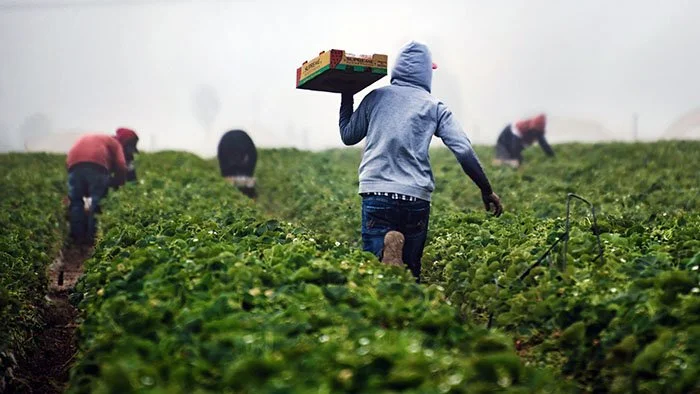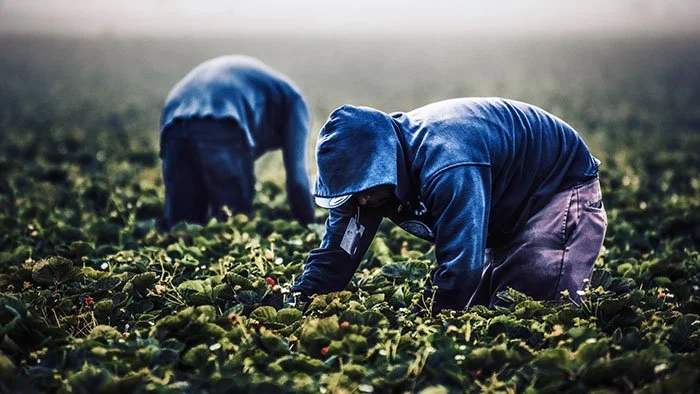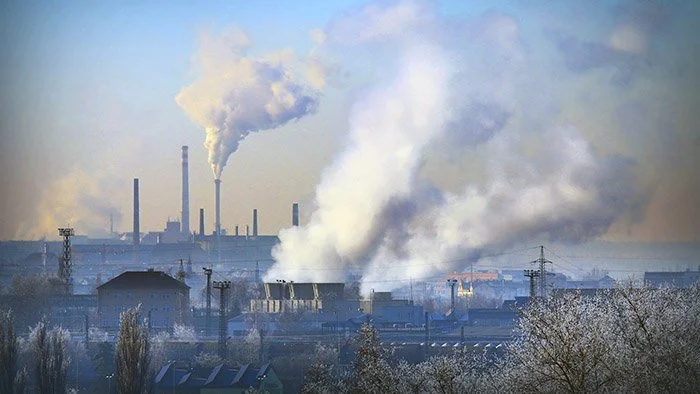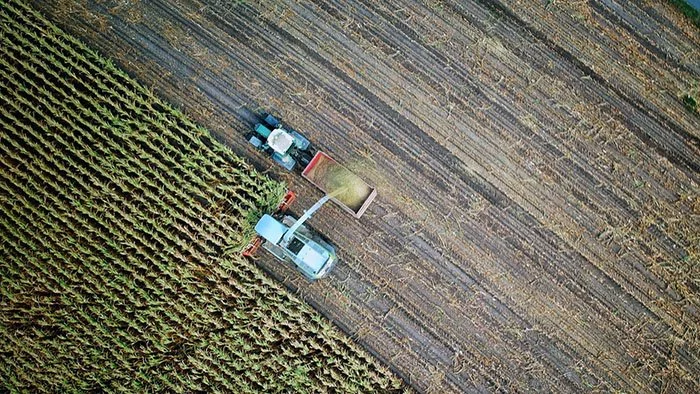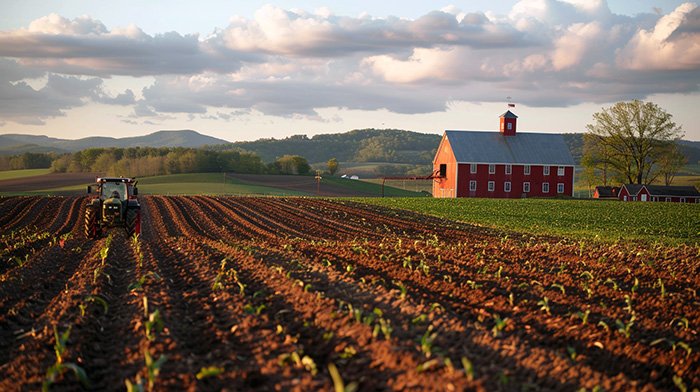Agricultural Labor Crisis: Solutions, Innovation, & Reform
The United States is facing a significant farm labor shortage. As a result, farmers struggle to find workers to grow and harvest crops. This crisis can lead to higher prices and less food in stores. The shortage also means crops might be left unharvested, leading to food waste.
The farm labor shortage is also hurting the economy because farming is an essential part of it. Many farms are struggling to stay in business, which affects everyone. Fixing this problem is vital for farmers, our food supply, and the economy. We must find solutions to ensure that our farms can keep producing the food we rely on. Addressing the labor shortage can ensure everyone has access to food.
Declining Farm Numbers
Between 2017 and 2022, the United States lost 141,733 farms, a 7% decrease over just half a decade. This significant drop shows the problems facing the farming industry. Many farms are closing because they cannot find enough workers, and this farm labor shortage highlights a broader problem with the agriculture workforce system.
The shortage of farm labor is causing many farmers to struggle. Without enough workers, it's hard to plant, tend, and harvest crops. This problem affects not only the farmers but also our food supply and economy. When farms close, it means higher prices and less food in stores.
The connection between the decline in farm numbers and the broken agricultural workforce system is clear. The current system isn't helping farmers find and hire needed workers.
Fixing the workforce issues and helping farmers can stop the decline in farm numbers. We must prioritize solutions to ensure a steady food supply for the future.
Labor Shortages in Agriculture
Farm labor shortages are a big problem in the United States. Some factors involved include an aging workforce and declining immigration from rural Mexico. Farmworkers' children leaving the family business also contribute to the shortage. These factors make it hard for farmers to find enough workers to help with operations.
Factors Contributing to Labor Shortages
Aging Workforce: The average age of farmworkers is getting older. Many farmworkers are nearing retirement age. As they age, there aren't enough young people to take their place. This reality means there are fewer people available to work on farms.
Declining Immigration: Immigration from rural Mexico has been a common source of farm labor. Tighter laws and other factors have reduced the number of incoming farm laborers.
Changing Career Aspirations of Farmworkers' Children: The children of farmworkers are seeking different careers and leaving agriculture. The result is that even fewer workers are available to help on farms.
Case Study: Labor Shortages in California
In California, labor shortages have led to unharvested produce. Farmers can't find the needed workers to pick their crops, which sometimes leaves fruits and vegetables to rot in the fields. Some farmers are turning to machines to help with the work, but this isn't always enough. This directly impacts the availability and cost of produce in stores.
Understanding these factors is crucial for finding solutions to the farm labor shortage. Innovative farming technologies can help. One prime example is Eden Green's greenhouses, which offer sustainable farming solutions.
Challenges of the H-2A Visa Program
The H-2A visa program allows farmers to hire temporary workers from other countries. This program helps farmers find workers when they can't find enough local help.
Increased Use of H-2A Visas for Temporary Workers
More and more farmers are using H-2A visas to get the help they need. The number of H-2A workers has increased dramatically in the past few years. This shows farmers' dependence on this program to keep their farms running.
Limitations of the H-2A Program
There are two main limitations of the program that are applicable here:
Designed for Seasonal Work, Not Year-Round Needs: One big problem with the H-2A program is that it is intended for seasonal work. This means it helps farmers during the busy seasons, like planting and harvest. However, many farms need workers all year round. The H-2A program doesn't help with that.
Complex and Costly Application Process: Another problem is that applying for H-2A workers can be very complex and costly. Farmers have to fill out a lot of paperwork and follow many rules. This can be hard, especially for small farms. It takes time and money, which not all farmers have.
These challenges make it hard for farmers to get the help they need. Employment in new farming methods, like urban agriculture jobs, can help address these issues. Finding better solutions keeps our farms productive and our food supply steady.
Economic Impact of the Labor Shortage
The farm labor shortage has severe effects on the economy. These problems affect farmers and everyone who buys and eats food.
Effects on Agricultural Productivity
Farmers can't keep up with planting, caring for, and harvesting crops without workers. This means less food can be produced, and farms can't run as smoothly and efficiently as they should.
Contribution to Food Waste
The labor shortage also leads to a lot of food waste. When there aren't enough workers to harvest crops, fruits and vegetables are left rotting in the fields. This wasted food could have been sold in stores and eaten by families. Instead, it is lost, which is terrible for farmers and consumers.
Potential for Increased Food Prices
With less food produced and more food wasted, the prices of fruits and vegetables can go up. When there isn't enough supply to meet demand, prices rise. This means people have to pay more for their groceries. The farm labor shortage can make it harder for families to afford healthy, fresh food.
These economic impacts show how important it is to solve the farm labor shortage. Vertical farming jobs can help ensure a steady food supply and stable prices.
Climate Factors Affecting Farm Work
Climate change is making farm work even harder. Rising temperatures and tough working conditions exacerbate the labor shortage.
Rising Temperatures and Their Impact on Farm Labor
As temperatures rise, working on a farm becomes more complex and dangerous. High heat can cause health problems like heat exhaustion and heatstroke. Farmworkers have to take more breaks and work slower to stay safe, which means less work gets done.
Deterrence of Potential Workers Due to Challenging Conditions
The harsh conditions caused by rising temperatures make farm work less appealing. Fewer people want to work in such hot and difficult environments. This means even fewer workers are available to help on farms, worsening the labor shortage.
Addressing these climate-related challenges is crucial for the future of farming. Improving working conditions can help make farm work safer and more attractive. Innovative solutions like sustainable agriculture careers are a step in the right direction. They can help ensure a steady and reliable workforce for our farms.
Proposed Solutions to the Labor Crisis
Several solutions have been proposed to solve the farm labor shortage. These include reforms to the H-2A visa program. Wage adjustments, technological solutions, and improved working conditions will also help.
H-2A Visa Reform
The H-2A visa program needs to be easier for farmers to use. Simplifying the paperwork and process helps farmers get the workers they need quickly.
The costs associated with the H-2A program can be high. Reducing these costs can make it more accessible for all farmers. Even smaller farms that may struggle with expenses can benefit.
The current H-2A program is mainly for seasonal work. Expanding it to cover year-round positions can help farmers who need workers yearly.
Wage Adjustments
Different farm jobs have various levels of difficulty and skill requirements. Adjusting pay to match these roles can help attract more workers to the harder and more skilled jobs.
Transparent and fair standards for calculating wages help promote fair worker pay. This can make farm work more attractive and help retain workers.
Technological Solutions
Technology can fill some of the gap left by the labor shortage. Robots and AI can help with planting, tending, and harvesting crops. These technologies can make farms more efficient and less reliant on human labor.
Some farms have already started using technology to solve labor issues. For example, farms are using automated systems to pick fruits and vegetables. These solutions work quickly and don’t need breaks, helping to increase productivity.
Improved Working Conditions
One of the focuses of sustainable agriculture is better working conditions on farms. For example, with rising temperatures, protecting workers from heat is crucial. Providing shade, water, and breaks can help keep workers safe and healthy.
Making farm work safer and more comfortable can attract more workers. When workers know they will be treated well and kept safe, they are likelier to stay in their jobs.
These solutions help address the labor shortage and ensure that farms remain productive. By combining these approaches, we can support farmers and keep our food supply stable. To explore more about innovative farming methods, check out careers in.
The Role of Eden Green and Vertical Farms and Hydroponics
Vertical farming and hydroponics are new ways to help solve the farm labor shortage. Eden Green is a leader in this area, using technology to make farming easier and need fewer workers. For more details, check out our page on how it works.
Introduction to Eden Green
Our mission at Eden Green is to change farming with new technology. We use vertical farming and hydroponics, which grow plants in stacked layers with water instead of soil. This method uses less space and resources but produces a lot of food. Our goal is to make farming more sustainable and efficient.
Advantages of Vertical Farming and Hydroponics
Vertical farming and hydroponics have many benefits. These methods need fewer workers than traditional farming. Machines do much of the planting, tending, and harvesting to reduce the need for manual labor.
Indoor vertical farms can work all year, no matter the weather. This means they can grow crops continuously, regardless of season or climate. It also means they can offer year-round careers to workers rather than seasonal work.
Vertical farms and hydroponics are very efficient. They use less water and land and can produce more food in a smaller space. Machines help increase productivity, reducing the need for human labor.
These methods create better working conditions. Since the farms are indoors, workers aren't exposed to extreme weather. The contained environment also lowers the risk of pests and diseases, making it safer for both workers and plants.
Our technology at Eden Green is helping to create a more sustainable and efficient future for farming. Our greenhouses need less labor and offer increased productivity. Vertical farming and hydroponics are key solutions to the labor crisis in agriculture. These methods change how agriculture affects the environment and improve farming efficiency.
Frequently Asked Questions (FAQs)
Is there a shortage of farm labor?
Yes, there is a significant farm labor shortage in the United States. Many farms can't find enough workers to plant, tend, and harvest crops. This shortage affects food production and can lead to higher prices in stores.
Why is farming not profitable?
Farming can be unprofitable due to high costs for equipment, seeds, and labor, fluctuating crop prices, and challenges like extreme weather and pests, which can reduce crop yields.
For more information on how we’re working to change this, see Is Vertical Farming Profitable? A Comprehensive Analysis.
Why is there a decline in farmers?
There is a decline in farmers because many older farmers are retiring, and fewer young people are choosing farming as a career. High costs and low profits also make it hard for new farmers to start and succeed.
Who makes up most of the farm workers today?
Most farm workers today are immigrants, many from rural areas of Mexico and other countries in Latin America. These workers play a crucial role in planting, tending, and harvesting crops.
What is the job outlook for a farmer?
The job outlook for farmers is challenging due to labor shortages, high costs, and market uncertainties. However, new farming methods like vertical farming and hydroponics offer opportunities. Check out How AgTech Is Transforming Farming for an overview of how agriculture is changing.
Why are small farms going out of business?
Small farms are quitting business because they often can't compete with larger farms. They face higher costs per production unit and have less access to advanced technology and large markets.
Is there a future for small farms?
Small farms, especially those that adopt new technologies and sustainable practices, have a future. They can thrive by focusing on niche markets, organic products, and local food systems.
Why are farmers struggling in the US?
Farmers struggle due to high costs, low crop prices, and labor shortages. Climate change and extreme weather also pose significant challenges.
What is causing the current labor shortage?
Many factors cause the current labor shortage. These include an aging workforce and fewer immigrants coming to work on farms. Meanwhile, young people are choosing careers outside of farming, making it hard for farmers to find the workers they need.
One way we’re working to solve this problem is to offer farm workers the sort of benefits that office workers typically enjoy. For more details, check out This Indoor Farming Company Is Trying To Win Workers Over to Agriculture.
Partnering with Eden Green Technology
Are you interested in innovative farming solutions? Partner with Eden Green Technology to help transform agriculture. Join us as we work to create a sustainable and efficient future for farming. Contact us today to discover partnership opportunities and ways to address agricultural challenges.

